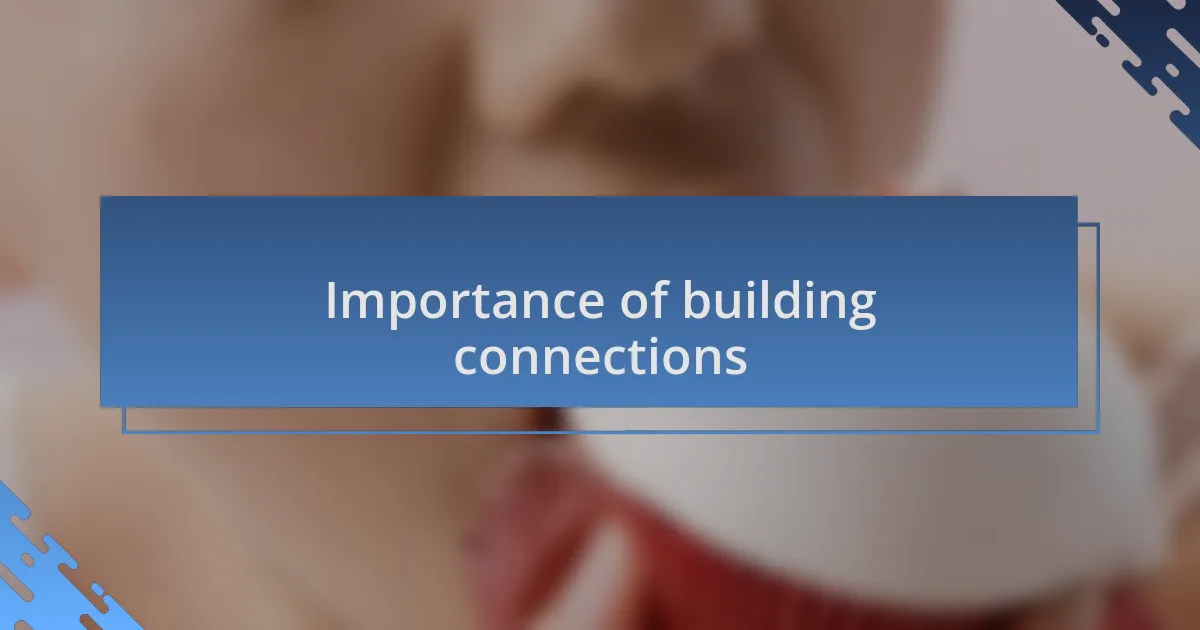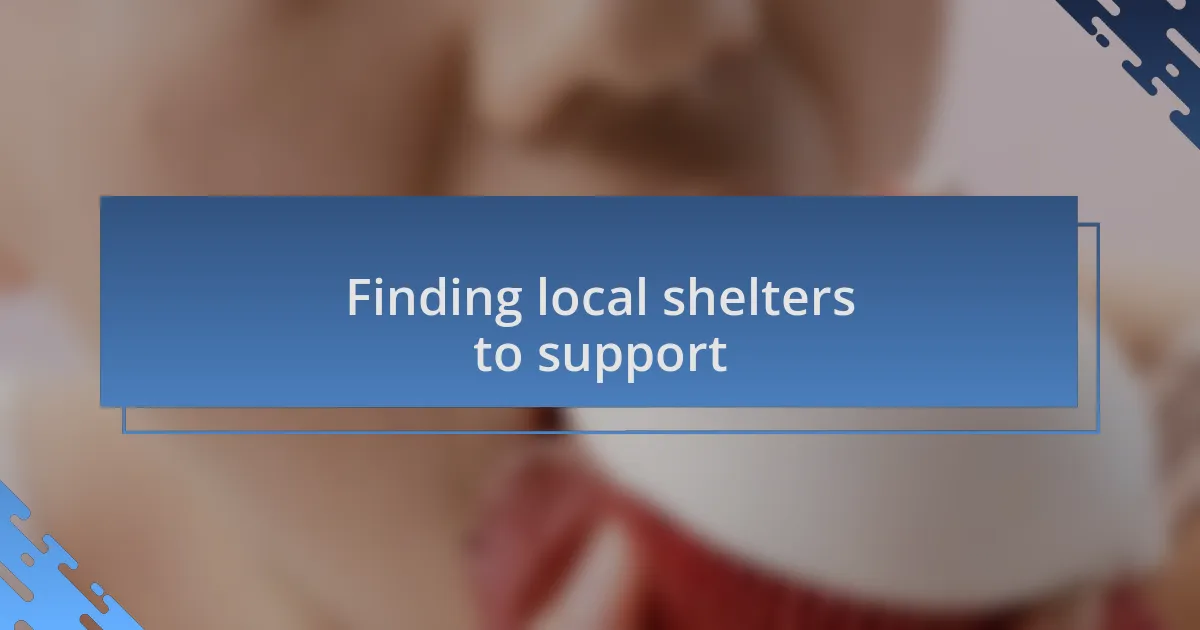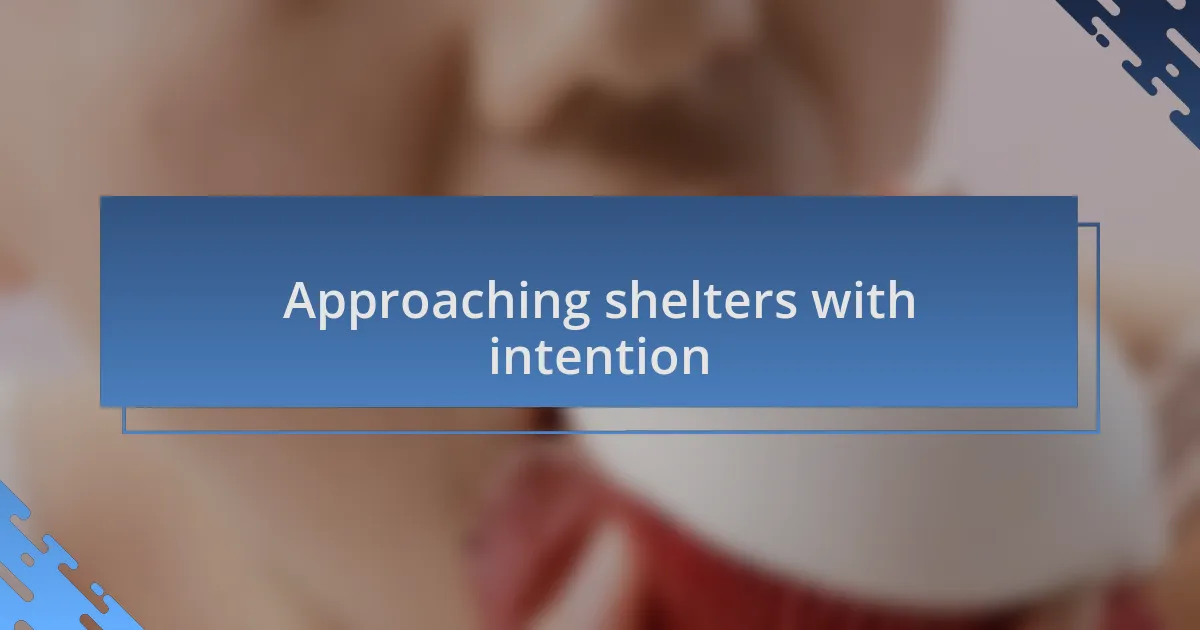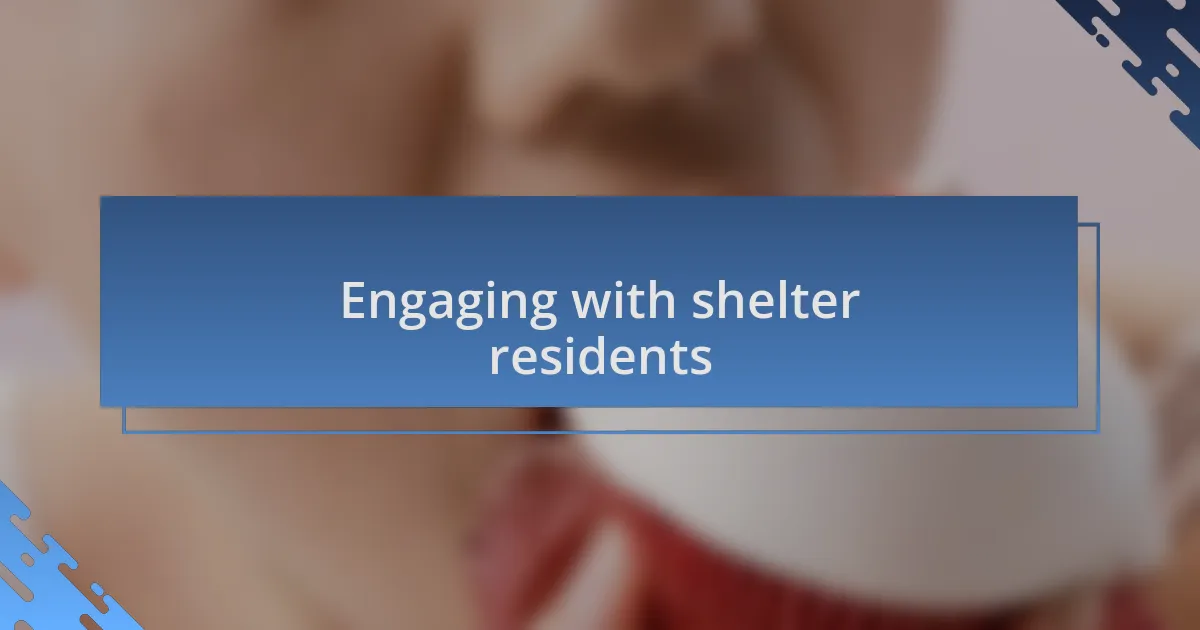Key takeaways:
- Building genuine connections with individuals in shelters fosters empathy and breaks down stereotypes surrounding homelessness.
- Approaching shelters with intention and understanding their unique needs enhances the effectiveness of support provided.
- Active listening and simple acts of kindness can significantly impact residents, fostering deeper relationships and trust.
- Consistent engagement through shared activities, like book clubs, creates lasting impacts and strengthens community bonds.

Understanding homeless charity
Homeless charity is more than just providing meals or warm clothes; it’s about fostering genuine connections and understanding the stories behind each individual. Reflecting on my own experiences, I recall meeting a man in his thirties who had lost everything due to unforeseen circumstances. His vulnerability reminded me that everyone has a unique journey, and it’s crucial to approach each person with empathy and openness.
In my interactions, I’ve learned that the act of kindness often opens doors to deeper conversations. I vividly remember sitting down with a woman who shared her dreams of having a stable job and her struggle with self-worth. It’s moments like these that make me question: how many of us take the time to really listen to those in need?
The emotional weight of these connections can be overwhelming but also incredibly rewarding. Each person I’ve met has taught me lessons about resilience and hope, pushing me to rethink the stereotype surrounding homelessness. Isn’t it fascinating how a simple act of sharing a cup of coffee can lead to profound insights into someone’s world?

Importance of building connections
Building connections in shelters is vital for fostering a sense of belonging and support. During one of my volunteer shifts, I struck up a conversation with a young man who seemed isolated and withdrawn. As we talked about his love for music, I saw his eyes light up; that moment made me realize how powerful a simple connection can be in uplifting someone’s spirit.
Feeling connected can significantly impact an individual’s mental health and resilience. I remember another instance where a group of sheltered individuals banded together to share their experiences. The camaraderie they developed not only provided emotional support but also created a network of encouragement; it was eye-opening to see how solidarity could help them face their challenges.
Why is it that we often overlook the importance of these connections? When we engage genuinely with others, we break down barriers and stereotypes, inviting empathy and understanding into our interactions. My experiences in shelters have reinforced my belief that every genuine conversation has the potential to transform lives, both for those receiving help and those providing it.

Finding local shelters to support
Finding local shelters to support can be an eye-opening experience. One afternoon, I wandered through my neighborhood and stumbled upon a small, tucked-away shelter that I had never noticed before. It was humbling to find a place that was quietly working to make a difference, and this sparked my curiosity to learn more about all the local shelters in my area.
As I began to explore various shelters, I realized that each one had its own unique story and mission. I remember meeting a dedicated director who shared the challenges they faced daily. Hearing her passion highlighted the importance of supporting local initiatives. Have you ever considered how just a small effort on your part could help sustain these vital services?
I started attending community meetings to better understand how I could make an impact. The stories I heard were powerful and inspiring. It reinforced my belief that supporting local shelters isn’t just about providing resources; it’s about connecting to the heart of a community that thrives on compassion and support.

Approaching shelters with intention
When approaching shelters, I always prioritize understanding their unique needs and mission. One sunny afternoon, I walked into a shelter that seemed almost overwhelmed with clients. Instead of diving straight into offering help, I asked the staff what their greatest challenges were. This simple question opened a door to deeper connections and allowed me to tailor my support to their specific situation.
Intention is crucial when it comes to building relationships within these spaces. I remember volunteering at a shelter one winter evening, and it struck me how often well-meaning individuals would show up with general donations without consulting anyone first. I made it a point to engage with the staff and the people they served—asking what they truly needed rather than assuming. This approach fostered a sense of trust and showed that I genuinely cared about their experiences.
When you approach a shelter, think about how your presence can contribute positively. Reflecting on my experiences, have you ever felt the power of simply listening? I found that taking the time to hear others’ stories not only enriched my understanding but created a bridge of empathy and respect. It’s about building relationships that matter, which can transform the impact of our efforts.

Establishing relationships with staff
Establishing a relationship with shelter staff can feel daunting at first, but I’ve learned that authenticity is key. During my first visit to a shelter, I took the time to introduce myself to the staff, sharing a bit about my background and why I was there. That openness led to a more meaningful dialogue, and soon, I was not just a volunteer— I became a part of their community.
One evening, while helping in the kitchen, I noticed a staff member looking particularly overwhelmed. Instead of just focusing on my tasks, I offered my assistance. She later confided that she appreciated the extra help because it gave her a moment to breathe. Moments like these taught me that small acts of kindness can solidify trust and build rapport, turning a simple connection into a supportive partnership.
Have you ever considered how a simple smile and a polite question can change the dynamic of your interactions? I’ve found that being approachable makes staff members feel comfortable to share their insights and challenges. These conversations not only enrich the experience for everyone involved but also cultivate a collaborative spirit, ensuring that our collective efforts are directed exactly where they are most needed.

Engaging with shelter residents
Engaging with shelter residents often requires a gentle touch and genuine interest. I remember sitting in a common area, simply sharing coffee with a few residents. One woman, hesitant at first, eventually opened up about her love for painting. That small conversation not only broke the ice but also led to a weekend art session where we all expressed our thoughts creatively. It was a reminder that the simplest moments can foster deeper connections.
I’ve learned that active listening is crucial in these settings. One day, while chatting with a resident, I noticed the weight of her story. I made it a point to let her talk freely about her struggles and dreams without interruption. It was a powerful experience; her gratitude at feeling heard was evident. Have you ever realized how rare it is for someone to truly listen? I find it remarkable how such an act can build trust and open pathways to more meaningful connections.
Sometimes, engaging with residents means stepping out of traditional boundaries. One afternoon, I organized a game day in the shelter. Initially, I was nervous about the turnout, but seeing everyone laughing and playing together was magical. That experience taught me that creating fun and relaxed environments can transform interactions, making it easier for residents to share their stories and experiences. Don’t you think that joy brings people closer? It certainly did for us that day.

Creating lasting impact in shelters
Building lasting connections in shelters goes beyond basic interactions. I recall a chilly evening when I took the time to share personal stories about my own struggles and victories with some residents. Their eyes lit up as they realized that vulnerability creates a safe space. Isn’t it striking how sharing our journeys can break down barriers and foster mutual understanding?
Creating lasting impacts often involves consistent engagement. I dedicated a few hours each week to facilitate a book club, which became more than just a reading group. As we discussed the stories, sharing our own perspectives led to deeper conversations about hopes and dreams. This experience reinforced my belief that a consistent presence can help individuals feel valued and understood. Have you ever seen how a small routine can knit a community together?
One memorable moment occurred during a holiday gathering when I encouraged residents to share what they were grateful for. Their heartfelt reflections illuminated the resilience within the community. That simple act of gratitude not only strengthened bonds but also inspired a collective sense of hope. How powerful is it that a shared space can become a haven of strength and positivity?